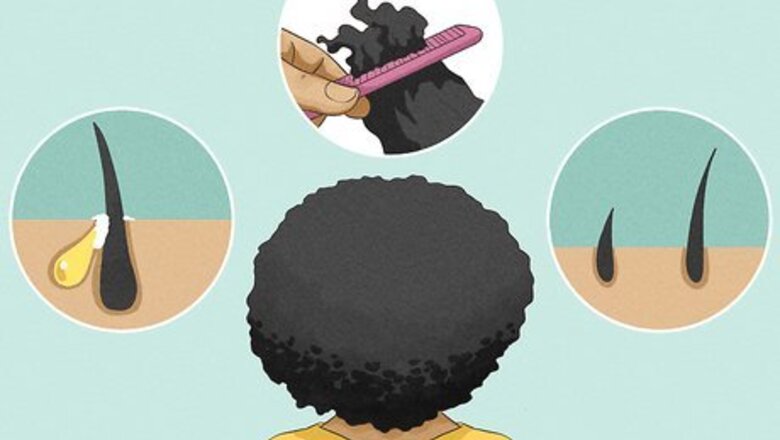
views
Understanding Your Natural Hair
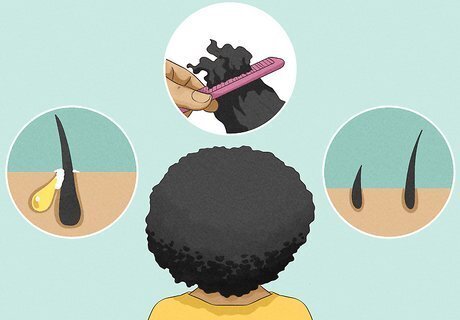
Understand the characteristics of natural hair. Natural hair has unique characteristics that you should know about in order to take good care of your hair. People with natural hair produce tight curls, which can keep sebum (a natural moisturizer) from saturating all the way down the hair shaft. This can lead to dry hair. Natural hair is prone to knotting when you comb it. Knotting also contributes to breakage, so some avoid combing altogether. Natural hair often has a slower growth rate than other hair types. In addition, the highly curved hair shaft means that hair shrinks up as it dries; those with very kinky or curly hair may see up to 75% shrinkage!

Know your hair type. Natural hair comes in many varieties. While many care basics remain the same regardless of hair type, understanding your hair type may help you pinpoint what care and styling routines will produce the results you want. There are 4 basic types of natural hair: straight (1), wavy (2), curly (3), and kinky (4). There are multiple subcategories, depending on your hair’s characteristics. For example, Type 4 hair is generally split into three subcategories: 4A (spiral curls), 4B (kinky curls), and 4C (coiled curls). Many products refer to hair types like “3A” or “4B.” The number refers to hair type, while the letter refers to texture. Natural hair tends to be type 3 or 4.
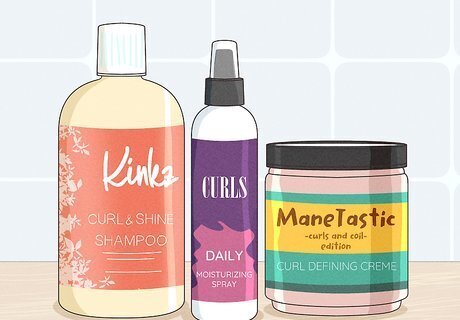
Identify your hair’s needs. Understanding your hair type can help you understand your hair’s care and styling needs. Type 3 hair has springy, defined curls with a lot of volume and body. It can be fragile or fine, and needs moisturizing conditioners and treatments. Type 4 hair has very tight curls with a lot of volume. The hair is usually wiry, and may have multiple curl patterns instead of a single dominant one. Type 4 hair is the most fragile hair type because it has fewer cuticle layers than other hair types. Heavy-duty moisturizers and conditioners will help keep type 4 hair healthy.
Cleansing Your Natural Hair
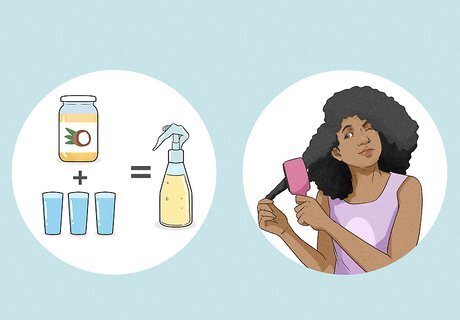
Detangle before you wash your hair. Natural hair is prone to tangling and knotting, and washing your hair while it’s tangled could damage it. Using moisturizers and a detangling comb will help remove knots, tangles, and shed hairs. Combine one part oil (coconut or olive) with three parts water in a spray bottle. Spray your hair until it is thoroughly wetted. Distribute moisturizing conditioner evenly throughout your wet hair. Many conditioners include oils and waxes that make your hair slippery, and that will make it easier to comb through without breaking. Work through your hair with your fingers, feeling for knots and tangles. This will help you avoid snagging them with the comb later. Gently work the knots apart with your fingers. Separate your hair into manageable sections. You can loosely twist the sections you’re not working on, or clip them up out of your way. Use a detangling comb to work through each section from the ends up.
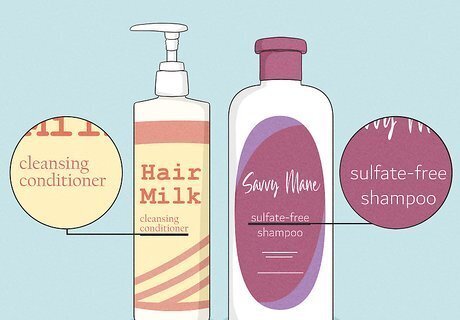
Avoid harsh shampoos. Many shampoos contain chemicals such as ammonium lauryl sulfate, ammonium laureth sulfate or sodium lauryl sulfate. These create that luxurious foam when you wash your hair, but they can also cause dryness and breakage. Look for “sulfate-free” shampoos that will be kinder to your hair. There are also shampoo-free cleansing products such as “cleansing conditioners” that you can use. Cleansing products don’t foam like regular shampoo, but they tend to be easier on your hair. You can find them at most drug stores and beauty supply stores.
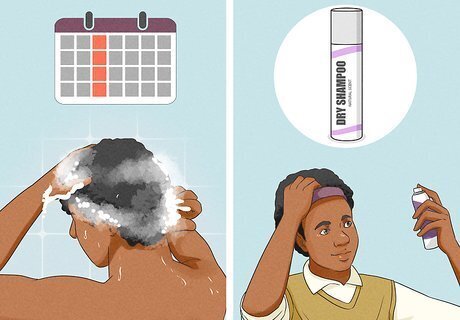
Avoid over-washing your hair. Natural hair is naturally dry, and washing it too frequently can actually suck moisture out of your hair. Washing once a week is usually plenty. If your hair does get oilier than you’d like, try a dry shampoo. These are sprayable, powder-based cleansers that absorb excess oil without stripping the hair follicle. Don’t overdo it. Dry shampoos are usually removed by brushing, and brushing can also damage natural hair.
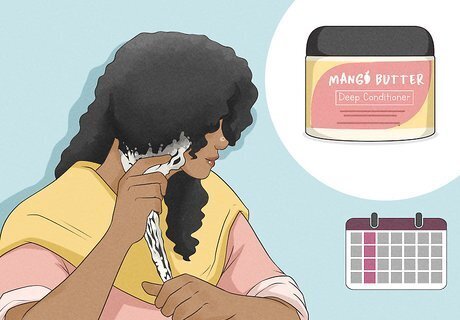
Deep condition your hair weekly. You can make deep-conditioning masks at home. Products you have around your house, such as olive oil, avocado, honey, banana, and even mayonnaise can help strengthen and replenish your hair.
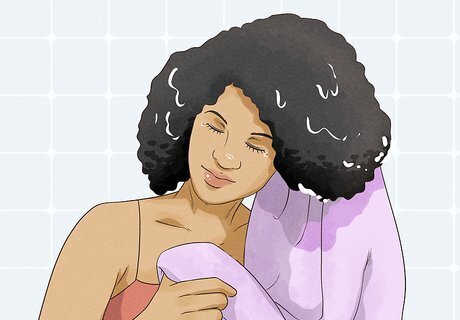
Squeeze your hair dry. Use a soft old t-shirt or a microfiber towel to squeeze excess moisture from your hair. Never rub your hair dry with a towel! This roughens the hair cuticle and causes frizz and breakage.
Preparing Your Natural Hair for Styling
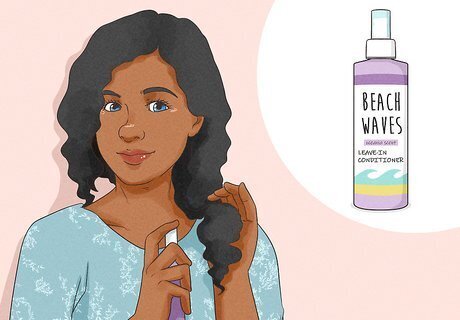
Use leave-in moisturizers. Natural hair requires much more moisture than other hair types to keep it healthy. You don’t have to spend a ton of money on leave-in conditioners, though: olive oil, coconut oil, shea butter, and cocoa butter are all excellent moisturizers that you can leave in your hair after washing and conditioning.

Bypass heat styling whenever possible. Let your hair air dry and avoid using a hair dryer, as blow drying wet natural hair means the dangerous combination of high heat and lots of pulling with a styling brush. Curling irons, hot rollers, and hair straighteners are also very hard on your hair. There are some things you can do to get your hair straighter, like heavy-duty moisturizing, but avoid heat styling whenever you can to avoid breakage.

Prevent frizz with moisture. This may seem counterintuitive because frizz is caused by hair sucking up moisture from the environment, but hair that is already well-hydrated is less likely to frizz. Natural oils like olive oil and coconut oil are excellent frizz-fighters, although there are also many products you can buy that will help defeat frizzing. Products that contain silicone are particularly good at smoothing hair and fighting frizz. They may also cause “crunchy” hair, so experiment and see if you like the results.
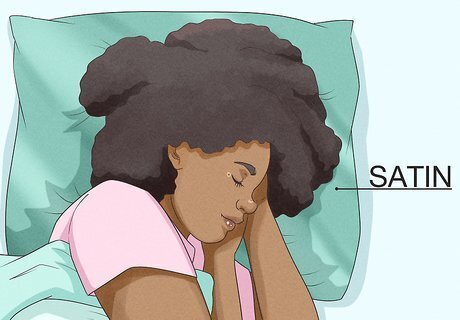
Sleep on satin to keep tangles away. Sleeping on a smooth satin pillowcase or wrapping hair in a silk scarf before bed is not only a luxurious little bit of pampering, it will help keep your hair from tangling while you sleep.
Styling Your Natural Hair
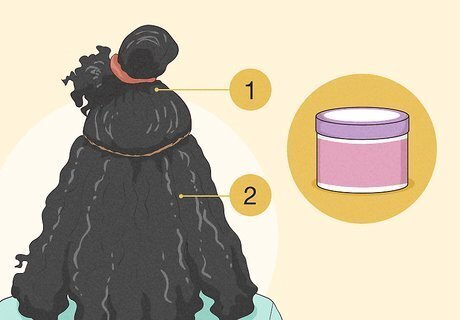
Apply styling products in layers. Products such as gels and serums can be great for getting your hair to do what you want, but too much can end up causing your hair to look greasy or “crunchy.” It’s always easier to add more than take products out!

Use rollers to straighten and set your hair. Roller-setting your hair can help straighten and smooth your hair with less heat than a curling iron or straightener. Use a heavy conditioner and completely detangle before using rollers. Magnetic rollers and satin-covered foam rollers will be kinder to natural hair than other types. Avoid Velcro or mesh rollers at all costs, as they are prone to tangling and could break your hair.
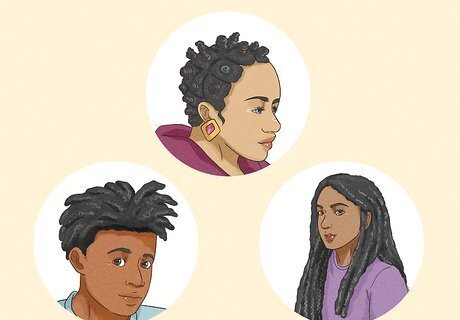
Consider protective styles. Protective styles such as braids, twists, and knots keep the hair secured, which cuts down on styling time and helps to take pressure off of fragile ends. There are many tutorials online that break down these styles into easy DIY steps. Good sources for styling advice include "Curly Nikki" and "Naturally Curly." Some protective styles, such as braids, can take hours to do and are best done by a professional hairstylist. Others, such as buns and twists, can be easily done at home.
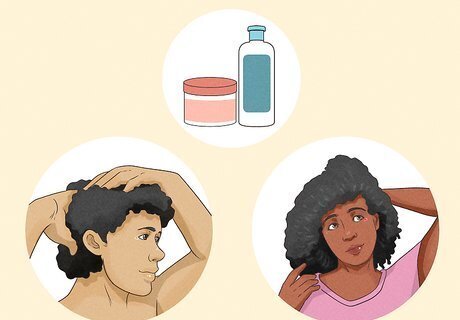
Moisturize your hairstyle daily. You can keep all styles looking fresh by spritzing them daily with a mixture of water, leave-in conditioner, and moisturizing oils such as olive oil or coconut oil.
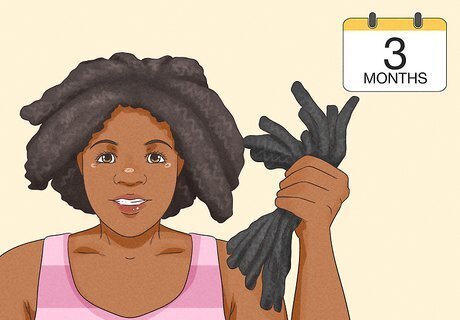
Take out a style after 3 months. Even protective styles such as braids and twists shouldn't be left in longer than 12 weeks. Always deep condition and seal your hair after taking out a style.

















Comments
0 comment